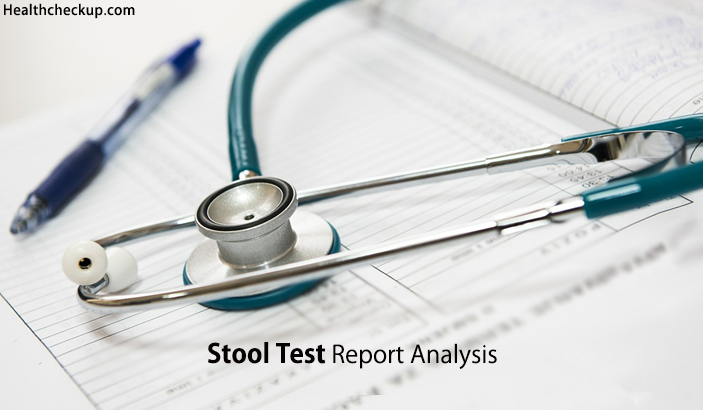What is Stool Test?
Stool tests are a widespread practice that may be performed due to various reasons. They are presented on kids as well as in adults if there are any changes in your stool or if you have any gastrointestinal problems, problems like severe diarrhea, allergy, and inflammation in the body or any digestive issues like malabsorption or even bleeding effects in the internal organs.
The stool test is usually performed to detect the presence of any type of bacteria or parasites that are present in the intestine and infecting the gut. Sometimes, a stool test report also helps to understand the presence of fat content in stool. Fat is usually absorbed from the intestine however in some instances, due to digestive disorders, we have checked that the fat is incompletely absorbed and the worst part is it also remains in the stool.
Why is a Stool Test Required?
Diagnosing the presence of specific bacteria or parasites in the stool is essential as it can cause various kinds of diseases like bloody diarrhea and gastrointestinal problems. Testing stool can help diagnose the cause and hence treat the problem. A stool test should also be performed to help diagnose various kinds of conditions that affect the digestive tract. These conditions comprise of infections from parasites, bacteria, and virus, malabsorption of nutrients or also something more severe like a gastrointestinal tract cancer.
When is a Stool Test Required?
Now that you know the reasons for a stool test, you need to know when a stool test is actually required.We have checked the general medical records, and it says that not many people like to undergo for stool test and in fact, they don’t even know the significance of a stool test and why it is performed. A doctor usually asks for a stool test to be done if specific symptoms cannot be diagnosed open-eyed. Some of the symptoms of a stool test may be
- Diarrhea that may last for more than a few days
- Blood in the feces
- Severe stomach pain and cramps on a recurrent basis
- Throwing up, fever and nausea
- Problems in the gastrointestinal tract
- Food poisoning
- Lactose intolerance
- Colorectal Cancer
A Stool test report will help doctors understand the cause of the problem and thus treat the same
How to Perform the Stool Test?
To see the blood in the stool test, a noninvasive test called the Fecal Occult Blood Test is performed. And then, the stool is smeared on a card, after spreading it the lab assistance put a few drops of a developing solution into the map to detect any abnormal changes. The color instantly changes and shows that blood is present in the stool. To test the stool for bacteria, the stool is situated in the incubator for at least 48 to 72 hours, and bacteria can thus be identified. Also, swabs from the child rectum may also be tested for the virus.
How to Read Stool Test Results?
Various conditions can affect your gut and also produce different kinds of abnormalities in the feces. Gastroenterologists can diagnose any variety of diseases by analyzing the changes in the stools color, consistency, pH balance and the presence of fats, sugars, blood, white blood cells, bile and mucus in the stool. Specific enzymes in the stool can also help to understand how well your pancreas is functioning.
- The Color of Your Stool: Bile in your stool is what gives your stool the common yellowish brown color. If food passes quickly, the bile is not digested correctly, and your stool will be a light yellowish colored, which is a little different from the conventional color. The standard color of stool should be bright to dark brown. Yellow and green stool may give you indications that all is not ok inside. There are times when there may be green stools due to an intake of too many green vegetables or green food-coloring agents. Black stool is the cause of too much of iron supplements or even bleeding in the upper gut. Violet stool may indicate that you have Porphyry
- The pH Balance: The healthy pH balance of your stool ranges from 6.5 to 7.5; Less than 5.5 pH refers to the acidic stool which means poor absorption of carbohydrates or fat; Less than 7.5 means that you have the alkaline stool that may indicate Colon Cancer.
- Blood Fat and Enzymes, Pus in Stool: These substances may be present in the stool if you have ulcerative colitis, colon cancer, fissures, hemorrhoids, or inflammation of the intestines. A bacterial infection can cause the occurrence of white blood cells in the stool. A Stool test report pus cells can also be a matter of concern.
- Stool Culture: The stool culture test results can be either negative or positive. The unfavorable report is meant an absence of, while positive statement implies the presence of Bacteria in the stool
Frequently Asked Questions
1. How to Collect the Stool?
These are how a stool is collected. You can also try out the home stool test
- A sample of your stool collected in a clean container
- Now the container that holds the stool samples would label with your name and DOB
- So that anyone can readily recognize it.
- The bottle is stored away in a clean and cold room in a sealed plastic till the test is performed
2. Is There Any Precaution?
Ensure that the stool was collected in a clean and hygienic way
3. Can the Stool be Collected at Any Time of the Day?
The first-morning stool should be preferably collected for examining the same
4. Can I Chew Tobacco or Smoke During the Collection of the Stool?
Restrain yourself from chewing or smoking tobacco during the collection day. Your stool test report will help doctors diagnose your problem and accordingly treat you.
Medically Reviewed By









